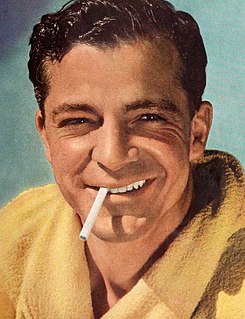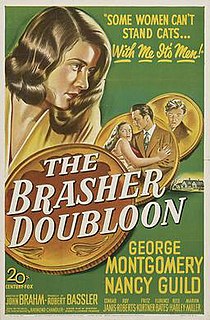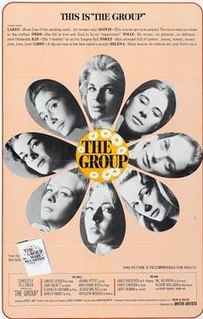
Lewis Milestone was a Russian-American film director. He is known for directing Two Arabian Knights (1927) and All Quiet on the Western Front (1930), both of which received Academy Awards for Best Director. He also directed The Front Page, The General Died at Dawn (1936), Of Mice and Men (1939), Ocean's 11 (1960), and received the directing credit for Mutiny on the Bounty (1962), though Marlon Brando largely appropriated his responsibilities during its production.

The Big Parade is a 1925 American silent war drama film directed by King Vidor, starring John Gilbert, Renée Adorée, Hobart Bosworth, Tom O'Brien, and Karl Dane. Written by World War I veteran, Laurence Stallings, the film is about an idle rich boy who joins the US Army's Rainbow Division and is sent to France to fight in World War I, becomes a friend of two working class men, experiences the horrors of trench warfare, and finds love with a French girl.

The Bishop's Wife, also known as Cary and the Bishop's Wife, and also known by the distribution title Honni soit qui mal y pense, is a 1947 Samuel Goldwyn romantic comedy feature film directed by Henry Koster and starring Cary Grant, Loretta Young, and David Niven. The plot is about an angel who helps a bishop with his problems. The film was adapted by Leonardo Bercovici and Robert E. Sherwood from the 1928 novel of the same name by Robert Nathan.

Mary Jean "Lily" Tomlin is an American actress, comedian, writer, singer, and producer. She started her career as a stand-up comedian as well as performing off-Broadway during the 1960s. Her breakout role was on the variety show Rowan & Martin's Laugh-In from 1969 until 1973. She currently stars as Frankie Bergstein on the Netflix series Grace and Frankie, which debuted in 2015 and has earned her nominations for four Primetime Emmy Awards, three Screen Actors Guild Awards, and a Golden Globe Award.

Carver Dana Andrews was an American film actor who became a major star in what is now known as film noir. A leading man during the 1940s, he continued acting in less prestigious roles and character parts into the 1980s. He is best known for his portrayal of obsessed police detective Mark McPherson in the noir Laura (1944) and his critically acclaimed performance as World War II veteran Fred Derry in The Best Years of Our Lives (1946).
The year 1947 in film involved some significant events.

The Paradine Case is a 1947 American film noir courtroom drama film, set in England, directed by Alfred Hitchcock and produced by David O. Selznick. The screenplay was written by Selznick and an uncredited Ben Hecht, from an adaptation by Alma Reville and James Bridie of the 1933 novel of the same title by Robert Smythe Hichens. The film stars Gregory Peck, Ann Todd, Alida Valli, Charles Laughton, Charles Coburn, Ethel Barrymore, and Louis Jourdan. It tells of an English barrister who falls in love with a woman who is accused of murder, and how it affects his relationship with his wife.

Louis Jourdan was a French film and television actor. He was known for his suave roles in several Hollywood films, including Alfred Hitchcock's The Paradine Case (1947), Letter from an Unknown Woman (1948), Gigi (1958), The Best of Everything (1959), The V.I.P.s (1963) and Octopussy (1983). He played Dracula in the 1977 BBC television production Count Dracula.

Robert Burgess Aldrich was an American film director, producer, and screenwriter. His notable credits include Vera Cruz (1954), Kiss Me Deadly (1955), The Big Knife (1955), Autumn Leaves (1956), Attack (1956), What Ever Happened to Baby Jane? (1962), Hush...Hush, Sweet Charlotte (1964), The Flight of the Phoenix (1965), The Dirty Dozen (1967) and The Longest Yard (1974).

The Brasher Doubloon is a 1947 American crime film noir directed by John Brahm and starring George Montgomery and Nancy Guild. It is based on the 1942 novel The High Window by Raymond Chandler.

Dorothy Patrick was a Canadian-American film actress and a John Robert Powers model.

The Group is a 1966 ensemble film directed by Sidney Lumet based on the 1963 novel of the same name by Mary McCarthy about the lives of a group of eight female graduates from Vassar-like college South Tower from 1933 to 1940.
"Where or When" is a show tune from the 1937 Rodgers and Hart musical Babes in Arms. It was first performed by Ray Heatherton and Mitzi Green. That same year, Hal Kemp recorded a popular version. The song also appeared in the film version of Babes in Arms two years later.

The North Star is a 1943 pro-resistance war film starring Anne Baxter, Dana Andrews, Walter Huston, Walter Brennan and Erich von Stroheim It was produced by Samuel Goldwyn Productions and distributed by RKO Radio Pictures. It was directed by Lewis Milestone, written by Lillian Hellman and featured production design by William Cameron Menzies. The music was written by Aaron Copland, the lyrics by Ira Gershwin, and the cinematography was by James Wong Howe. The film also marked the debut of Farley Granger.

Mr. Novak is an American television dramatic series starring James Franciscus in the title role as a high school teacher. The series aired on NBC for two seasons, from 1963 to 1965. It won a Peabody Award in 1963.

Norma Varden Shackleton, known professionally as Norma Varden, was an English-American actress with a long film career.

David Wood Townsend was an American art director.
Earl Felton (1909–1972) was an American screenwriter.

The Killing of Sister George is a 1968 American black comedy film directed by Robert Aldrich and filmed at his Aldrich Studios in Los Angeles. It is based on the 1964 play by British playwright Frank Marcus. In the film, an aging lesbian television actress, June "George" Buckridge, simultaneously faces the loss of her popular television role and the breakdown of her long-term relationship with a younger woman. Although Marcus's play was a black comedy, the film version was marketed as a "shocking drama"; it added explicit lesbian content that was not in the original play, and was presented as a serious treatment of lesbianism.
Events in 1911 in animation.
















